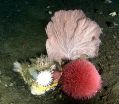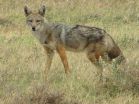(Press-News.org) 190 million Americans share the luxuries of human life with their pets. Giving dogs and cats a place in human homes, beds and--sometimes even, their wills--comes with the family member package.
Amongst these shared human-pet comforts is the unique luxury to overeat. As a result, the most common form of malnutrition for Americans and their companion animals results not from the underconsumption, but the overconsumption of food. The obesity epidemic also causes a similar array of diseases in people and pets: diabetes, hyperlipidemia and cancer.
During this year's ADSA-ASAS Joint Annual Meeting, five companion animal nutrition experts from around the world further examined the implications of over- or inaccurately feeding cats and dogs. "Companion Animal Symposium: Bioenergetics of pet food" was a part of the Companion Animal Science Program, an event sponsored annually by the George Fahey Appreciation Club.
Bioenergetics concern energy flow through living systems. Since obesity results from an imbalance of energy use and intake, bioenergetics help scientists understand the correlation between overweight animals and the food they consume.
The most definitive player in pet health is the owner. Dr. Kelly Swanson, Professor of Animal and Nutritional Sciences at the University of Illinois, says the first step in combating pet obesity is simply realizing that an animal is overweight.
"Owners need to actually recognize that their pet is obese, and is not just a funny, pudgy animal that looks cute," said Swanson. "Lean, healthy pets not only live longer, but more importantly, have a better quality of life."
In fact, some lifelong studies show that maintaining a lean body condition score (BCS 4 or 5) adds an average of 1.8 years to dogs' lives. Preserving steady body conditions requires owners to not just read pet food labels, but to actually understand and apply the feeding directions.
Food types and feeding frequencies also need to vary from animal to animal. Dr. Dennis Jewell, Research Scientist at Hill's Pet Nutrition, emphasized the customization of feeding programs to fit each individual.
"Each pet has unique genetics that determine, for example, if they're going to use more calories to maintain their body weight than other animals," said Jewell. "We can design feeding programs for specific pet populations - based on factors like age, size, et cetera - but feeding regimens still come down to the individual pet."
For example, weight-loss regimens equate to the feeding of less energy-dense and more fiber-dense diets. Increased fiber intake results in less ad-libitum food consumption.
One overlooked feeding strategy may lie in the nature of the food itself. According to Dr. Katherine Kerr, Post-Doctoral Research Fellow at the University of Florida, raw and whole-prey diets may provide a viable alternative to extruded ones. Her projects primarily focus on the eating patterns and nutritional health of African wildcats.
"While observing feeding behaviors, we soon recognized that felines aren't physiologically made to chew," said Kerr. "When feeding whole prey, they basically just crush the skull and swallow it whole."
The diets of wild-type cats include the hide, hair and bones of prey. When used in addition to other plant and animal fibers, these have a positive impact on energy metabolism and gut microbial populations. Meat-based and whole prey diets in domestic pets could yield similar results.
Kerr says that these types of diets are undervalued and under-researched nutritional therapy options. She believes they can play an essential role in health maintenance, and disease, allergy and obesity mitigation.
"The question, 'Should we mimic nature?' is often controversial," said Kerr. "We need to explore these diets more to find out the answer."
INFORMATION:
Read the abstracts of the Companion Animal Symposium, "Bioenergetics of pet food" at http://www.jtmtg.org/JAM/2015/abstracts/581.pdf.
Do you ever notice how stress and mental frustration can affect your physical abilities? When you are worried about something at work, do you find yourself more exhausted at the end of the day? This phenomenon is a result of the activation of a specific area of the brain when we attempt to participate in both physical and mental tasks simultaneously.
Ranjana Mehta, Ph.D., assistant professor at the Texas A&M Health Science Center School of Public Health, conducted a study evaluating the interaction between physical and mental fatigue and brain behavior.
The study showed ...
North of the Aleutian Islands, submarine canyons in the cold waters of the eastern Bering Sea contain a highly productive "green belt" that is home to deep-water corals as well as a plethora of fish and marine mammals.
Situated along the continental slope, the area also supports a thriving -- but potentially environmentally damaging -- bottom-trawling fishing industry that uses large weighted nets dragged across the seafloor to scoop up everything in their path.
A new study, conducted by research biologist Robert Miller of UC Santa Barbara's Marine Science Institute ...
CAMBRIDGE, Mass--Two key physical phenomena take place at the surfaces of materials: catalysis and wetting. A catalyst enhances the rate of chemical reactions; wetting refers to how liquids spread across a surface.
Now researchers at MIT and other institutions have found that these two processes, which had been considered unrelated, are in fact closely linked. The discovery could make it easier to find new catalysts for particular applications, among other potential benefits.
"What's really exciting is that we've been able to connect atomic-level interactions of water ...
A team of scientists has linked changes in the structure of a handful of central brain neurons to understanding how animals adjust to changing seasons. Its findings enhance our understanding of the mechanisms vital to the regulation of our circadian system, or internal clock.
The work, which appears in the journal Cell, focuses on the regulation of "neuronal plasticity"--changes in neuronal structure--and its function in the brain.
"Neuronal plasticity underpins learning and memory, but it is very challenging to tie changes in specific neurons to alterations in animal ...
Despite their remarkably similar appearance, the "golden jackals" of East Africa and Eurasia are actually two entirely different species. The discovery, based on DNA evidence and reported in the Cell Press journal Current Biology on July 30, increases the overall biodiversity of the Canidae--the group including dogs, wolves, foxes, and jackals--from 35 living species to 36.
"This represents the first discovery of a 'new' canid species in Africa in over 150 years," says Klaus-Peter Koepfli of the Smithsonian Conservation Biology Institute in Washington, DC.
The new study, ...
The desire to quit smoking--often considered a requirement for enrolling in treatment programs--is not always necessary to reduce cigarette cravings, argues a review of addiction research published July 30 in Trends in Cognitive Sciences. Early evidence suggests that exercises aimed at increasing self-control, such as mindfulness meditation, can decrease the unconscious influences that motivate a person to smoke.
Scientists are looking to the brain to understand why setting a "quit day" isn't a surefire way to rid oneself of a cigarette habit. Recent neuroimaging studies ...
A study that took a novel approach to investigating factors affecting the emergence of symptoms of Huntington's disease (HD) has identified at least two genome sites that house variants that can hasten or delay symptom onset. In their report in the July 30 issue of Cell, the multi-institutional research team describes how genome-wide association analysis of samples from more than 4,000 HD patients found that particular variants on two chromosomes were more common in individuals who first exhibited HD-associated movement disorders either earlier or later than would otherwise ...
Not every mom and dad agree on how their offspring should behave. But in genetics as in life, parenting is about knowing when your voice needs to be heard, and the best ways of doing so. Typically, compromise reigns, and one copy of each gene is inherited from each parent so that the two contribute equally to the traits who make us who we are. Occasionally, a mechanism called genomic imprinting, first described 30 years ago, allows just one parent to be heard by completely silencing the other.
Now, researchers at the University of Utah School of Medicine report on a ...
A new imaging tool developed by Boston scientists could do for the brain what the telescope did for space exploration. In the first demonstration of how the technology works, published July 30 in the journal Cell, the researchers look inside the brain of an adult mouse at a scale previously unachievable, generating images at a nanoscale resolution. The inventors' long-term goal is to make the resource available to the scientific community in the form of a national brain observatory.
"I'm a strong believer in bottom up-science, which is a way of saying that I would prefer ...
Oropharyngeal cancer patients who were found to have detectable traces of human papillomavirus type 16 (HPV16) in their saliva following cancer treatment are at an increased risk for recurrence, a study led by researchers at the Johns Hopkins Bloomberg School of Public Health has found.
The oropharynx is the area of the upper throat that includes the back of the tongue, the soft palate, the tonsils and the walls of the throat. Oropharyngeal cancer accounts for 2.8 percent of new cancers in the United States; it is often treated successfully with surgery.
In a small ...



